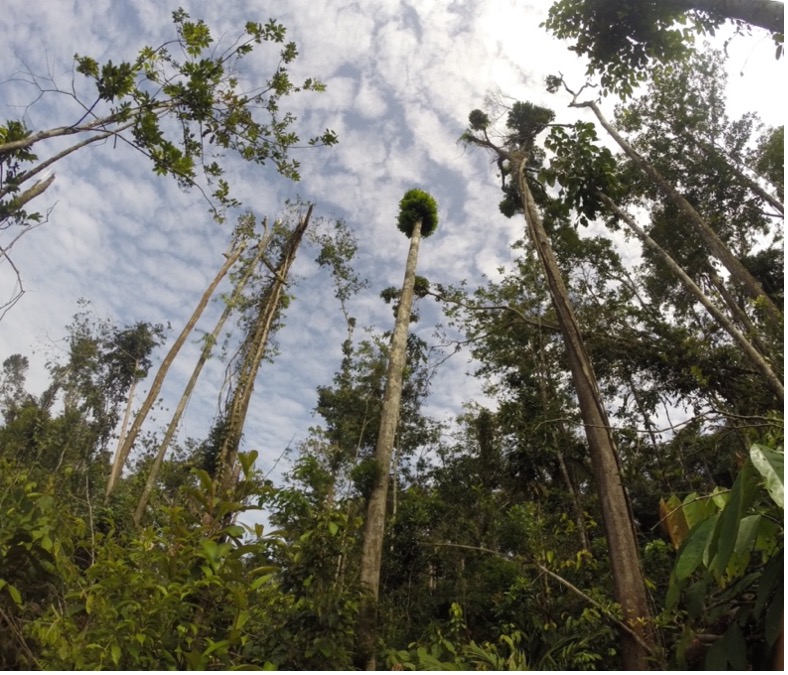Tropical forest responses vary with cyclone intensity, frequency, soil phosphorus and elevation

Image courtesy of Richard J. Norby. Tree and forest canopy damage near the El Verde Field Station in Puerto Rico shown from the ground about one year following Hurricane Maria.
The Science
Hurricanes damage forests across tropical regions. With some difficulty, damage to tree canopies is measured on the ground, but satellites can also detect this damage. Researchers evaluated how well tree canopy damage assessed from space matched with leaf and branch damage assessed on the ground. They found that these two types of measurements were related, and that wind speed, site history with hurricanes, elevation and soil fertility influence the amount of damage. Regrowth of leaves and branches occurred in just a few months. Ultimately, ground-and space-based measurements provide complementary views of hurricane effects.
The Impact
Analysis of damage from the same storms using both ground and satellite data reveals strengths and limitations of satellite data for understanding damage. In particular, soil fertility can potentially influence the amount of canopy damage. It would be ideal to evaluate this across a much wider set of storms than have been observed from the ground, but this study indicates that care must be taken in interpreting results because the influence of soil fertility on ground and satellite measurements may differ.
Summary
Researchers obtained satellite images associated with hurricanes that had been studied using ground-based observations of litterfall. The study used two alternate vegetation indices derived from satellite images to assess hurricane damage and recovery affecting tropical forests in Hawaii, Puerto Rico, Mexico, Australia, and Taiwan between 2004 and 2017. Changes in leaf area index (LAI) and enhanced vegetation index (EVI) were found to moderately correlate (r = −0.52 and −0.60) with changes in ground-based litterfall measurements. The largest drops in LAI (−77%) and EVI (−77%) occurred in Mexico (Jalisco) and Puerto Rico, respectively. LAI recovered to pre-hurricane levels in about four months, and EVI in two months, while litterfall took ten months. LAI and EVI reductions were larger in forests with more phosphorus-rich soil, but with low confidence. The historical frequency and intensity of hurricanes also influenced the amount of damage.
Contacts
Dellena Bloom (former SULI Intern)
University of Florida and Lawrence Berkeley National Laboratory
develyn.bloom@ufl.edu
Dr. Barbara Bomfim
Lawrence Berkeley National Laboratory
bbomfim@lbl.gov or babomfimf@gmail.com
Funding
This research was supported as part of the Next Generation Ecosystem Experiments-Tropics (NGEE-Tropics), funded by the U.S. Department of Energy, Office of Science and by the U.S. Department of Energy, Office of Science, and Office of Workforce Development for Teachers and Scientists (WDTS) under the Science Undergraduate Laboratory Internship (SULI) program.
Publications
Bloom, D.E., et al. “Combining field and remote sensing data to estimate forest canopy damage and recovery following tropical cyclones across tropical regions” Environmental Research: Ecology 2 035004 (2023). https://doi.org/10.1088/2752-664X/acfaa3